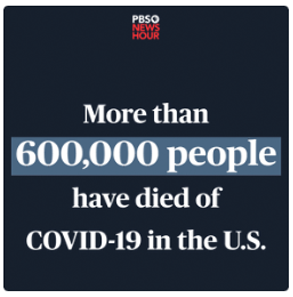Health Plan Weekly
-
By the Numbers: National Health Insurance Market as of 2Q 2023
Enrollment in managed Medicaid dropped by more than 2.1 million from the first quarter of 2023 to the second quarter, as the Medicaid eligibility redeterminations process resumed after a multi-year pause, according to AIS’s Directory of Health Plans.
Seven of the major national Medicaid insurers saw membership losses, with Centene Corp. losing more than 602,000 HMO members. Its membership declined by more than 100,000 in three states: Florida, Iowa and Texas. At the 2023 Wells Fargo Healthcare Conference on Sept. 6, Centene’s executives said that they expected the number of disenrolled former members to be in the range of 2.3 million to 2.4 million. Elevance Health, Inc. also reported significant membership loss in the second quarter, as nearly 475,000 members left its Medicaid HMO plans.

-
News Briefs: Average Employer Plan Premium Set to Rise 7%
The average annual premium for employer-sponsored health insurance this year increased by 7% for single coverage and family coverage, reaching $8,435 and $23,968, respectively, according to the KFF Employer Health Benefits Survey. The report, released on Oct. 18, noted that workers’ wages increased by 5.2% and inflation rose by 5.8% in 2023. The average annual increase last year was 2% for single coverage and 1% for family coverage. KFF’s survey, now in its 25th year, includes private and non-federal public employers with three or more workers.
Customer satisfaction with health insurance increased to a record-high score, according to the American Customer Satisfaction Index (ASCI) Insurance and Health Care Study published on Oct. 17. Humana Inc. had the highest score (82 out of 100), followed by UnitedHealthcare (78) and CVS Health Corp.-owned Aetna (77). ASCI’s report was based on interviews with 12,849 customers between October 2022 and September 2023 on subjects such as the range of plans available, ease of submitting a claim and access to doctors and hospitals. ASCI was founded in 1994 by researchers at the University of Michigan as well as the American Society for Quality in Milwaukee, Wisconsin, and CFI Group in Ann Arbor, Michigan.

-
Humana Taps Provider-Savvy Exec to Be Its Next CEO
Humana Inc. on Oct. 11 revealed that Bruce Broussard, who has been its CEO since 2013, will step down next year and be replaced by Jim Rechtin, the current CEO of private equity-owned physician staffing company Envision Healthcare Corp.
On the surface, choosing Rechtin to succeed Broussard could raise some eyebrows, since Envision just announced a deal that will allow the firm to emerge from Chapter 11 bankruptcy. And in recent years, major staffing firms like Envision have been at odds with insurers — in fact, Envision in May was awarded $91 million by an arbitration panel in a dispute with UnitedHealthcare over alleged underpayment for medical care.

-
At Emergency Med Conference, FTC Chair Decries Vertical Integration
PHILADELPHIA — Lina Khan, chair of the Federal Trade Commission, told attendees at the American College of Emergency Physicians (ACEP) Scientific Assembly on Oct. 11 that the FTC is paying close attention to so-called vertical integration in the health care industry.
“The FTC for decades, before I even arrived, had really been focused on what are known as horizontal mergers, between hospitals in particular,” she said. “But we’ve seen over the last decade that the tactics are changing. We are increasingly seeing not just the merger of alike, but also the merger of different entities within the same supply chain, what’s known as vertical integration.”

-
Health Plans Say Texting Could Mitigate Medicaid Redetermination Snafus
States are struggling to complete Medicaid redeterminations: CMS has said that there are potentially millions of Medicaid and Children’s Health Insurance Program members who were improperly disenrolled due to administrative problems. Some in the managed care industry believe that text messaging could drastically reduce the amount of procedural disenrollments, but a managed care trade group says that regulatory and operational struggles stand in the way of texting’s full potential.
State-led verification of Medicaid eligibility restarted earlier this year after being paused for several years as part of the federal response to the COVID-19 pandemic. According to KFF, “at least” 7.87 million people have been disenrolled through Oct. 2 — a figure that is almost certainly an “undercount” due to reporting lags of state data. KFF also found that 73% of people disenrolled from Medicaid lost coverage for “procedural reasons.”












